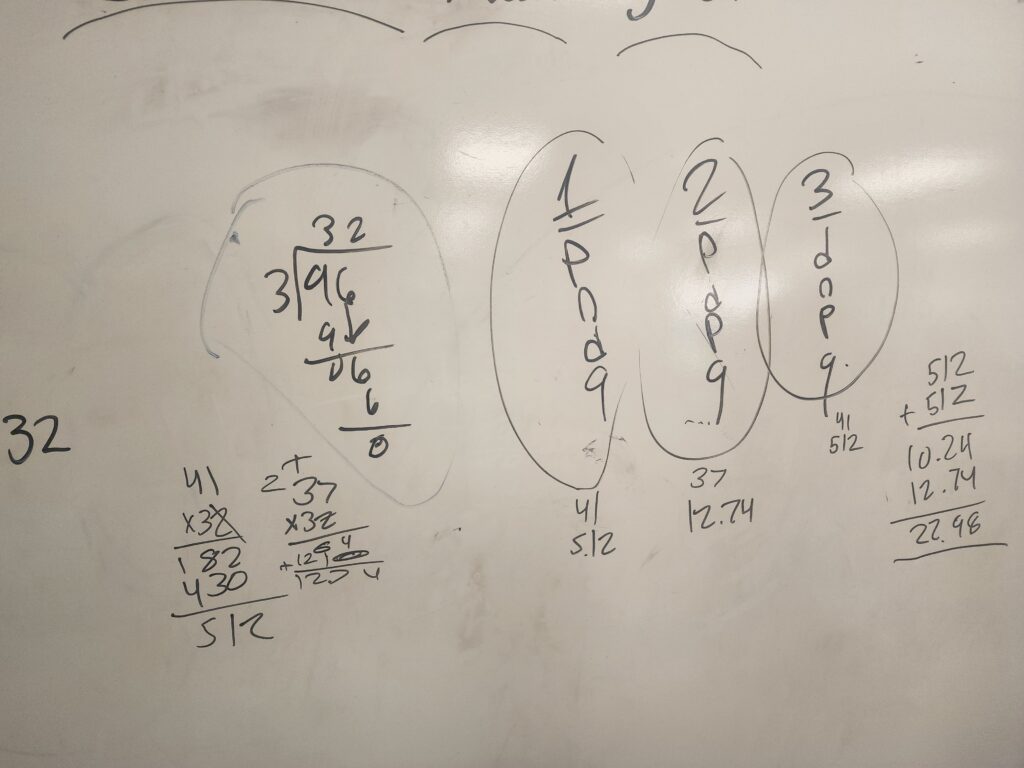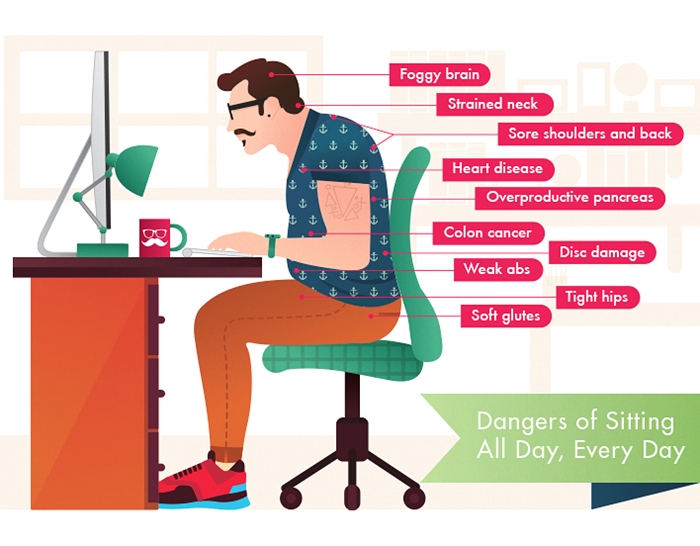I am getting into a regular routine of using VNPS (Vertical Non Porous Surfaces or working at “boards” as I call it with students) and am noticing a couple of things. The philosophy states that students should either be doing open ended problems or “thin slicing”–doing progressively difficult problems that challenge students to discover ways to solve math based on their existing background knowledge and number sense.
Much of what I teach in 6th grade is an introduction to basic concepts that are the foundations of algebra: order of operations, distributive property, exponents, and one step equations. Some of these things cannot be “discovered” through inquiry by students but must be taught as definitions. I call them the “grammar” of math. Rules for the order of operations are a good example. One can demonstrate the need for them with different solutions, but the agreed upon rules must be explicitly taught.
Recently I used whiteboards for progressively harder problems writing and solving exponents. I noticed is two things that break the “rules” of thinking routines. First students needed me to tell them if it was correct or keep working. They have no way to double check their work to prove if they are correct other than comparing to other groups who may also be wrong. Second, I made laps around my room either telling students to retry or giving them a new problem. As we progressed, I could not keep up. Students started getting bored and off task a bit. Nothing major, but playing with markers or erasers and conversing with other groups.
I don’t see this behavior when I give an open ended task because students are more invested and stick with it. What I now would say is that my exponents was not really thin-slicing at all but practice problems (the book calls them Check Your Understanding or CYU) done in a group at the boards.
Sometimes we have to explicitly teach a specific skill or mathematical technique. For example my curriculum requires students to use factor trees for prime factorization. Now factor trees are not really a new technique, but one they learned in previous years. What is new is writing the prime factorization at the end–which again is a grammar thing as it has to be written a certain way.
Variety of Approaches
So here is the approach that I am developing about when to use or not use whiteboards. I will use the introduction of exponents as an example.
- Day 1 Introduce Concept: Students work on an open ended problem at the whiteboards without vocabulary. We used the tax collector for exponents and followed it up the next day by reading One Grain of Rice together.
- Day 2 Introduce Vocabulary and Group CYU: I explicitly teach vocabulary and techniques based off from previous day’s experience and then students practice at their boards (group CYU). I taught them the vocabulary for exponents and showed them how to write and solve them. Then students solved progressively more difficult exponents at the boards.
- Day 3 Individual CYU and Assessment: Students practice problems from the book at their seats. Answer keys are posted so they can freely check their answers at any time. They work with a neighbor as needed, and I roam the room helping. We finish with a quick assessment so I know who has understanding or needs reteaching.
The days are not rigid as I sometimes mix several of these things in the same day. But what I am realizing is that my Day 2 is not really in line with the Thinking Classroom, but it is needed. It is a form of “we do” but without much help from me. I think my students benefit greatly from group practice.
In reading some posts and comments in the Building Classrooms Facebook group, I am not alone in seeing that the thinking classroom approach is not necessarily all or nothing. My Day 2 actually does require the whiteboards at all but could be a game (traditional or online like Gimkit), stations, card sort, partner work, or any other kind of hands on practice. I have been using whiteboards primarily because my 6th graders like them and I don’t have time to create hands on activities every day. As a goal I will develop one strategy such as stations per unit and slowly build things over time.
Learn with me!
If you are interested in how your school can use a PBL framework to teach SEL skills. I would love to have a conversation on how I can help. I have limited availability for PBL & SEL workshops during the school year so contact me early. Check out my workshop page or drop me an email at mikejkaechele@gmail.com. I would love to chat and co-plan meaningful PD for the educators at your school.




